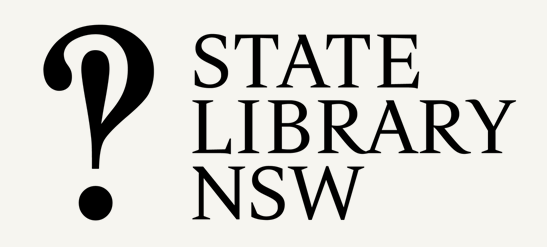Protocol 6 is about Aboriginal and Torres Strait Islander collection materials that are sensitive in nature, or have traditional restrictions or protocols around who can access them. Examples of secret or sacred materials are photographs of artefacts or descriptions of ceremonies that may only be viewed by initiated members of the community to which they belong, or that are considered ‘women’s business’. These include both published and archival materials recorded by researchers with permission, because the individuals or communities involved did not know that the material would be published or made public in an institutional collection.
Sensitive materials include items that recall traumatic events and practices experienced by Aboriginal and Torres Strait Islander peoples, such ledgers from missions or records relating to the stolen generation. There are also cultural sensitivities about using the names or photographs of people who have died.
Protocol 6 stresses the need to consult with appropriate representatives from the Aboriginal and Torres Strait Islander communities involved to ensure that secret, sacred or sensitive collection materials are identified, and that suitable storage and viewing facilities are provided where necessary.
There’s an emphasis on staff understanding any access conditions and ensuring they are observed, including restrictions on who can view or handle materials. This extends to the digital environment. For example, digitised images may need to be preceded by a sensitivity notice warning Aboriginal and Torres Strait Islander users of their content, or may be omitted from the online catalogue record.
This protocol also suggests that libraries establish reference groups of senior library and collections staff and Aboriginal and Torres Strait Islander representatives, and appoint at least one designated Aboriginal or Torres Strait Islander liaison officer as a point of contact between their library and relevant communities and reference groups.
In the video below, Damien Webb explains the importance of library staff being aware of known or potential secret or sacred collection materials, and how these should be identified, stored and made accessible.
Case studies
> Creating a process for cultural permissions
State Library Victoria’s Cultural Permission Program was developed to give Aboriginal and Torres Strait Islander people and communities whose ancestral material is held in the library’s heritage collections the authority to decide how that material may be used by others.
> Storylines: reconnecting collections to communities, families and individuals
Storylines is a State Library of Western Australia project that aims to break down barriers to Aboriginal and Torres Strait Islander peoples accessing collection materials, and recognise the importance of reconnecting this material to communities, families and individuals.
Further resources
Policies and guidelines
Position statement: Aboriginal and Torres Strait Islander collections and services in NSLA libraries – NSLA (2021)
Code of Ethics for Aboriginal and Torres Strait Islander Research – AIATSIS (2020)
The code ensures that research with and about Aboriginal and Torres Strait Islander peoples follows a process of meaningful engagement and reciprocity between the researcher and the individuals and/or communities involved in the research.
Guidelines for Accessing Sensitive Collections – State Library of New South Wales (2021)
“It is important for the Library to help people access information about themselves and their cultural heritage. At the same time we need to ensure that we have guidelines to protect personal information and culturally sensitive information. These guidelines include information on how to identify these collections and how to go about seeking access.”
Indigenous data – ARDC
“Data involving Aboriginal and Torres Strait Islander peoples has many legal and ethical considerations and needs to be managed and shared with care.”
Articles and presentations
Aboriginal histories in Australian government archives: Working with records of trauma – Kirsten Thorpe and Cassandra Willis (Los Angeles Archivists Collective, 2020)
This article shares the authors’ experiences of using government records that were “deeply racist and often contained within them atrocities and crimes against humanity” in their work with the New South Wales Aboriginal Trust Fund Repayment Scheme from 2005–2011.
The management of restricted Aboriginal objects by the National Museum of Australia – Davis Kaus (reCollections journal, 2008)
“The National Museum of Australia holds a sizeable collection of Aboriginal ethnographic objects that cannot be placed in the public domain because of strong cultural proscriptions on their use, display and viewing. This article outlines how the museum manages its restricted collections and the mechanics of their management and repatriation.”
See also: National Museum of Australia: Aboriginal and Torres Strait Islander secret/sacred and private material policy (2022)
‘I am anxious to have my children home’: recovering letters of love written for Noongar children – Elfie Shiosaki (The Conversation, 14 February 2020)
“Archives in the State Records Office of Western Australia hold hundreds of letters written by Noongar people to the Chief Protector of Aborigines and other government officials from the turn of the 20th century. The letters were captured within manic record-keeping systems used to surveil and control Aboriginal people…Aboriginal people are working to reclaim knowledge about our families in archives. The recovery of these letters has become a catalyst for storytelling, as we piece together archival fragments and living knowledge.”
Deciphering Arrernte archives: The intermingling of textual and living knowledge – Jason Gibson, Shaun Angeles, Joel Liddle (University of Hawai’i Press, 2019)
Interviews exploring some of the issues Arrernte peoples confront as they work through archives, including the limitations of conventional cataloguing requirements and the importance of reading archival texts in a way that sees them emplaced and tested against the knowledge of Elders, and the role of digital technologies in the future dissemination of cultural materials.









